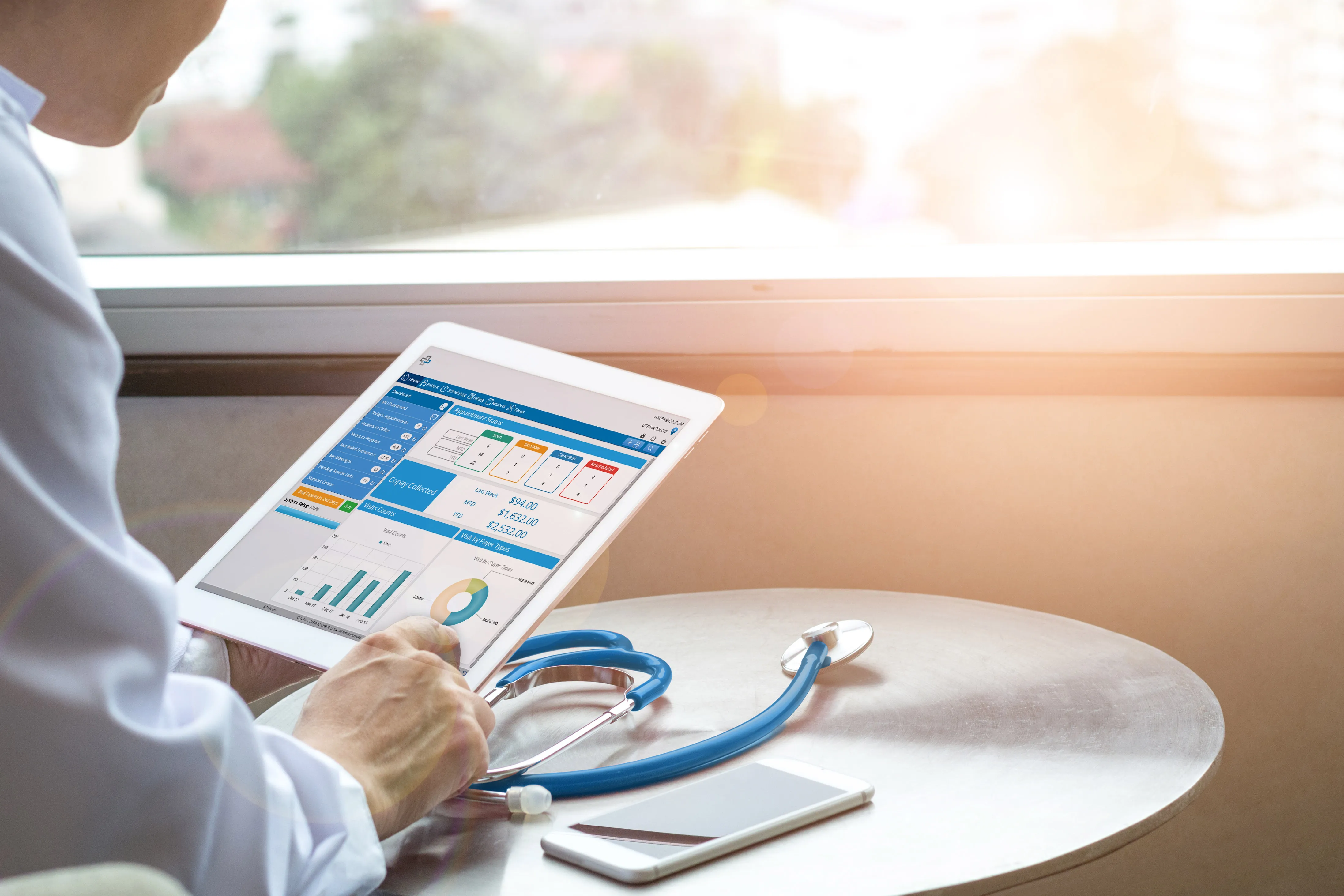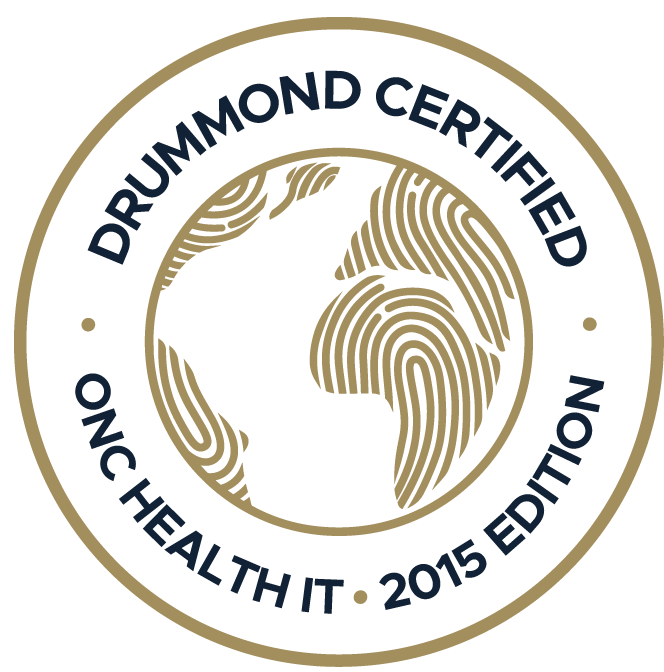Endocrinology is a specialized field focused on studying and treating hormone disorders, diabetes, thyroid conditions, and other metabolic issues. As such, having the right tools to manage patient data is crucial for...
The electronic health record (EHR) dashboard is a crucial tool for medical practices. It is often underappreciated despite its potential to offer valuable insights that can significantly benefit your practice.
While an EHR collects copious amounts of data, it's how you leverage that data that can have the most significant impact. The dashboard offers a quick overview of information that can be harnessed to enhance your practice. Here are three compelling reasons why medical practices should take full advantage of the EHR dashboard:
1. A Comprehensive Overview for Informed Decision-Making
One of the paramount advantages of integrating an Electronic Health Record (EHR) dashboard into medical practice is having a comprehensive and easily digestible view of all practice operations. Traditional record-keeping systems involve sifting through multiple folders, files, or digital systems, which can be time-consuming and cumbersome. However, the EHR dashboard streamlines this process by presenting critical data in a unified, easy-to-understand format.
Imagine a scenario where a physician needs to make a critical clinical decision. In the traditional world of paper records or fragmented digital systems, obtaining comprehensive patient data can be a time-consuming and often error-prone task.
The EHR dashboard changes this dynamic by instantly presenting a comprehensive overview of the patient's medical history, lab results, medication records, and treatment plans—all within a single interface. This real-time overview empowers healthcare providers to make prompt and well-informed decisions, ensuring patients receive the best possible care.
Moreover, the EHR dashboard is instrumental in treatment planning and monitoring. For patients with chronic illnesses, complex treatment regimens are common. Furthermore, the EHR dashboard allows physicians to access detailed treatment plans, track medication adherence, and make necessary adjustments as required.
Ultimately, this ensures patients with chronic conditions receive the continuous and personalized care they need. This approach, in turn, contributes to better health outcomes.
2. Provides Key Insights for Clinical, Operational and Financial Success
The EHR dashboard is a pivotal tool that empowers medical practices to attain clinical, operational, and financial success by offering key insights that foster continuous improvement.
- Clinical Support
From a clinical standpoint, the EHR dashboard serves as a window into a patient's healthcare journey. It provides real-time access to a patient's medical history, test results, and treatment plans.
This means that physicians can make informed decisions, enhance treatment strategies, and ensure that care aligns with the most current clinical guidelines. The EHR dashboard enables clinicians to deliver the highest quality care possible, ultimately improving patient outcomes and satisfaction.
- Operational Assistance
On the operational front, the EHR dashboard offers valuable insights into practice efficiency. It allows healthcare administrators to monitor key performance indicators, track resource allocation, and identify areas for process improvement.
Whether optimizing appointment scheduling, reducing patient wait times, or ensuring compliance with regulatory standards, the EHR dashboard equips practices with the data needed to enhance operational efficiency.
- Financial Assessment
From a financial perspective, the EHR dashboard plays a crucial role in ensuring the sustainability of the practice. By tracking financial metrics and revenue streams, practice administrators can make data-driven decisions to improve billing and collections processes.
Moreover, it helps identify and address revenue leakage, ensuring that practices receive the compensation they deserve for the care provided. Thus, the EHR dashboard helps increase the practice revenue and prevent possible revenue loss.
3. Improves Productivity and Efficiency.
Dashboards provide high-level information in real-time that helps practice managers, billers, and physicians be more productive day-to-day and long-term. A dashboard should include information on practice financials, patient flow, and tasks that need to be completed so that everyone involved within the practice can do their jobs effectively. Here’s some of the information the Practice EHR dashboard provides to help optimize the practice workflow:
- Appointment Status:
The EHR dashboard provides a comprehensive overview of appointment statuses, allowing medical practices to optimize patient flow and daily scheduling. It displays essential information like which patients have been seen, who have had no-shows, and those who canceled appointments.
This real-time data helps practice managers and physicians make informed decisions on the go, efficiently manage patient appointments, and ensure that slots are utilized effectively. For instance, if there's a surge in no-shows, the practice can quickly adapt by contacting waitlisted patients or filling those gaps with other tasks, improving overall practice productivity.
- Copay Status:
Managing copay collections is vital for the financial stability of a medical practice. The EHR dashboard provides a convenient snapshot of copay status, offering insights into the number of copays collected weekly, monthly, and annually.
This data ensures that practice billers and administrators can track and monitor revenue sources. Thus, by identifying copay collection trends, practices can adjust their financial strategies, potentially boosting overall revenue.
- Visit Counts:
Tracking visit counts is a crucial component of a medical practice's productivity and financial success. Therefore, the EHR dashboard provides a detailed account of the total number of patient visits, further categorized by payer type.
This information equips practice managers and financial teams with the insights they need to optimize billing and insurance processes. By understanding the breakdown of visits by payer type, practices can adapt their financial strategies to maximize reimbursements and efficiently manage patient populations.
- Key Performance Trends:
The EHR dashboard offers an overview of key performance trends in practice financials. This data includes a range of crucial financial indicators, like charges, payments, and accounts receivables.
Practice administrators and managers can access this data in real-time, allowing them to promptly monitor and react to any changes in these financial metrics. Moreover, understanding these trends empowers practices to make informed decisions about billing procedures, payment collection strategies, and financial planning. Thus, it ultimately contributes to financial stability and operational efficiency.
- Aging by Practice:
The EHR dashboard also provides valuable insights into account receivables categorized by aging. This feature helps practice managers understand the status of outstanding payments, such as which accounts are current, 30 days, 60 days, or 120 days overdue.
Armed with this information, medical practices can implement effective strategies to follow up on unpaid bills and rectify issues related to aging accounts. So, this level of granularity in accounts receivables management ensures that practices can maintain cash flow and resolve outstanding payments efficiently.
Practice EHR - ONE With Intuitive and Rich Dashboard!
The dashboard is a helpful tool for medical practices. It provides a quick glance into critical information to keep the practice running smoothly. Keep in mind the dashboard only provides a high-level view, so practices should also have immediate access to additional reporting and analytics as needed. As the saying goes, knowledge is power; a good EHR, like Practice EHR, provides medical practices with a wealth of information that can be used to make powerful decisions.
Practice EHR is a leading name in the medical billing and coding arena with an additional focus on practice management. Moreover, Practice EHR empowers providers and practice managers with its intuitive and rich dashboard. Our dashboard offers a comprehensive overview of the practice's clinical, operational, and financial status. Thus, practice owners can take charge of their practice from a single screen and take prompt actions where required.
Want to learn more about how Practice EHR can improve productivity and efficiency in your practice? REQUEST A DEMO now!
Topics: Integrated EHR, Healthcare Office Management, Patient Care, Small Practice, EHR Solution, New Technology, digital age, EHR
RECENT POSTS



TOPICS
- EHR Solution (142)
- EHR (79)
- Patient Care (72)
- digital age (72)
- Medical Billing (67)
- Specialty-Specific EHR (65)
- Integrated EHR (59)
- Small Practice (56)
- Technology in Healthcare (50)
- New Technology (47)
- Industry Update (45)
- RCM (43)
- Medical billing services (40)
- Cloud-based EHR (39)
- Practice EHR News (39)
- EHR Features (37)
- Healthcare Office Management (37)
- Kiosk (28)
- ePrescribing (21)
- HIPAA Security (16)
- EMR (12)
- Revenue Cycle Management (12)
- Practice Management Software (11)
- Client Favorites (10)
- Practice Automation (10)
- The ONE (10)
- Telemedicine (9)
- Urgent Care (8)
- MACRA/MIPS (7)
- Patient Portal (6)
- Switching to New EHR (6)
- events (6)
- E-Prescribing (5)
- Product Updates (5)
- Insider (4)
- Internal Medicine EHR (4)
- MIPS (4)
- Podiatry (4)
- Podiatry EHR (4)
- AI Scribing (3)
- AI Solutions (3)
- HIPAA (3)
- MIPS Reporting (3)
- Regulatory Updates (3)
- TeleVisit (3)
- AI scanning (2)
- Billing for Private Practices (2)
- Clearinghouse (2)
- Dermatology EHR (2)
- EHR Scheduling (2)
- Foot and Ankle Care (2)
- Foot and Ankle EHR (2)
- Health records 101 (2)
- Integrated Practice Management (2)
- Medical Credentialing (2)
- Medical Practice Management Software (2)
- Patient Check-in Kiosk (2)
- Psychiatry EHR (2)
- Quality of Patient Care (2)
- Reporting Under MIPS (2)
- Risk and Liability in Medical Settings (2)
- Telehealth Platforms (2)
- What Works Clearinghouse (2)
- AI-powered Medical Billing (1)
- Bariatric EHR (1)
- Behavioral Health Practices (1)
- Billing Communication (1)
- Cardiology EHR (1)
- Cash Flow (1)
- Chiropractic EHR (1)
- Data Security (1)
- Dos and Don'ts (1)
- EHR Guides (1)
- EHR KPIs (1)
- EHR Questions to Ask (1)
- EHR for Chiropractors (1)
- EHR for Chronic Illness (1)
- EMR vs EHR Difference (1)
- ENT EHR (1)
- Eligibility Verification in Medical Billing (1)
- Endocrinology EHR (1)
- Family Medicine (1)
- Family Medicine EHR (1)
- Gastroenterology (1)
- Gastroenterology EHR (1)
- General Surgery EHR (1)
- Geriatrics EHR (1)
- Guides (1)
- Healthcare Compliance Certification (1)
- Healthcare Practice Office Management (1)
- Insurance Reimbursement (1)
- KPI (1)
- Key Performance Indicators (1)
- Lab Processing (1)
- MACRA (1)
- Medical Billing Partner (1)
- Medical Coding Services (1)
- Nephrology EHR (1)
- Neurology EHR (1)
- Orthopedics EHR (1)
- Pain Management EHR (1)
- Pediatrics EHR (1)
- Physical Therapy EHR (1)
- Practice Cash Flow (1)
- Pulmonology EHR (1)
- Simplify Practice Management (1)
- Staffing in Healthcare (1)
- Switch Medical Billing Providers (1)
- Telehealth Platform (1)
- Urgent Care Medical Billing (1)
- Urology EHR (1)
- insurance claim denials (1)








